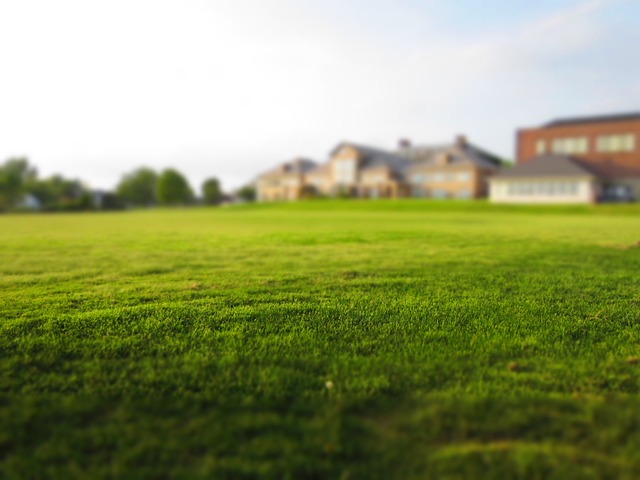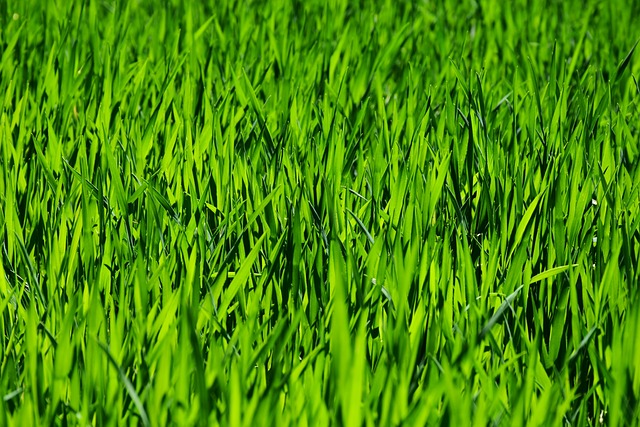Mastering Lawn Care: Foundational Steps for Superior Landscape Design
Lawn care is a fundamental aspect of successful landscape design, balancing aesthetics, functionality, and environmental sustainability. A thriving lawn not only enhances the visual appeal of your property but also plays a vital role in ecosyst…….

Lawn care is a fundamental aspect of successful landscape design, balancing aesthetics, functionality, and environmental sustainability. A thriving lawn not only enhances the visual appeal of your property but also plays a vital role in ecosystem health and biodiversity. A holistic approach to maintaining a healthy lawn includes regular mowing, watering, and fertilization tailored to conserve resources while promoting grass vigor and root development. Integrated pest management, combining organic and synthetic methods, is crucial for maintaining the lawn's resilience against potential harm.
Professional landscapers must extend their expertise beyond basic turf care to address broader environmental responsibilities. This includes understanding soil types—whether clay or sand—which influence plant selection and grass growth, as well as performing soil testing, aeration, and overseeding for optimal lawn health. Landscaping should be climate-appropriate and supportive of local native plants and wildlife, ensuring the space is both functional and ecologically sound.
Advanced irrigation systems combined with eco-conscious practices enable landscapers to create a sustainable outdoor haven that is both beautiful and practical. By understanding soil types, conducting soil tests, and tailoring care strategies to local climate conditions, homeowners can maintain a lawn that thrives without excessive effort, ensuring a durable, attractive, and low-maintenance green space that benefits both the property owner and the environment. Lawn Care and Landscaping, when approached with this comprehensive understanding, result in landscapes that are resilient, sustainable, and visually pleasing.
embark on a journey through the intricate art of landscaping design and implementation, where lush greenery meets meticulous planning. This exploration delves into the foundational elements of effective lawn care within landscape design, offering insights on soil assessment, grass variety selection, and optimizing sunlight utilization for a thriving yard. As we transition from theory to practice, learn how to seamlessly integrate lawn maintenance with overall aesthetic goals, enhancing your outdoor space’s beauty while fostering a resilient lawn ecosystem. Furthermore, discover the importance of compost and mulch in maintaining soil fertility and managing pests and diseases for a lush, vibrant lawn year-round. With a focus on sustainability and innovation, this article guides you through transforming your landscaping vision into reality, complete with professional tips for successful implementation and practical advice for seasonal maintenance. Join us as we navigate the transformative process of creating an outdoor oasis that reflects both the natural environment and your personal style, all while highlighting the synergy between Lawn Care and Landscaping.
- Foundational Elements of Effective Lawn Care in Landscape Design
- 1. Assessing Your Soil Type and Its Impact on Plant Selection
Foundational Elements of Effective Lawn Care in Landscape Design

A well-crafted landscape design is a harmonious blend of form, function, and sustainability. At the heart of this lies effective lawn care, which serves as the foundational element for any successful landscape. A lush, healthy lawn not only enhances the aesthetic appeal of a property but also plays a crucial role in ecosystem health and biodiversity support. To achieve this, it’s imperative to implement a comprehensive lawn care regimen that addresses both preventive maintenance and reactive interventions. Key practices include regular mowing at optimal heights to encourage grass growth and reduce weed competition, consistent watering tailored to local climate conditions to maintain soil moisture without waste, and the strategic application of fertilizers to nourish the turf and promote a robust root system. Additionally, integrating pest management strategies that utilize both organic and inorganic methods can protect against invasive species while preserving the health and vibrancy of the lawn.
Beyond mere grass care, landscaping professionals must consider the broader context of the environment. This includes soil testing to adjust pH levels for optimal nutrient uptake, aeration to alleviate soil compaction, and overseeding to enhance turf density and resilience. These practices not only contribute to a thriving lawn but also help in maintaining the overall health of the landscape. Landscaping designers must also be mindful of the regional climate, local flora and fauna, and the intended use of the space when planning lawn areas. By combining these principles with innovative irrigation systems and eco-friendly practices, landscapers can create a sustainable, beautiful outdoor environment that serves both functional and ecological purposes. Implementing these foundational elements of effective lawn care within landscape design ensures a green, welcoming, and low-maintenance space for years to come.
1. Assessing Your Soil Type and Its Impact on Plant Selection

In the realm of effective landscaping design, understanding your soil type is a pivotal aspect of lawn care and overall plant health. Soil composition varies widely across different regions, influencing the types of plants that can thrive in a given garden. For instance, clay soils retain moisture well but may become waterlogged, making them more suitable for certain shrubs or trees than for a lush, green lawn. Conversely, sandier soils drain quickly but may require additional nutrients to support diverse plant life. Assessing your soil type involves simple tests such as the texture, structure, and pH level, which can be done at home or by a professional. This information is crucial for selecting plants that are well-adapted to your specific conditions, ensuring they receive the necessary water, nutrients, and sunlight for optimal growth. Adept landscaping, therefore, begins with a thorough soil evaluation as part of comprehensive lawn care practices, paving the way for a resilient and aesthetically pleasing landscape.
Selecting plants that are compatible with your soil type is just one component of successful landscaping design. Lawn Care extends beyond plant choice to include regular maintenance activities such as aeration, fertilization, and proper irrigation. These practices enhance soil health and support the establishment of a robust lawn. Additionally, understanding the local climate, including seasonal variations in temperature and precipitation, is essential for implementing an effective watering schedule and choosing plants that can endure both drought and excess moisture. By marrying the right plant species with proper care strategies, landscapers can create outdoor spaces that are not only visually appealing but also sustainable and low-maintenance over time.
Effective lawn care and thoughtful landscaping design are integral components for creating an outdoor space that is both aesthetically pleasing and environmentally sound. This article has explored the foundational elements of lawn care, emphasizing the importance of soil type in informing plant selection, a critical aspect for sustainable gardening practices. By understanding your soil’s characteristics, you can select plants that thrive in your unique environment, fostering a vibrant landscape that requires less intervention while delivering greater beauty and ecological benefits. Implementing these principles enhances the overall appeal of your property and ensures a harmonious integration with the natural world. Whether you’re a seasoned gardener or just beginning your landscaping journey, prioritizing lawn care and smart design choices will yield a resilient and beautiful outdoor space.







